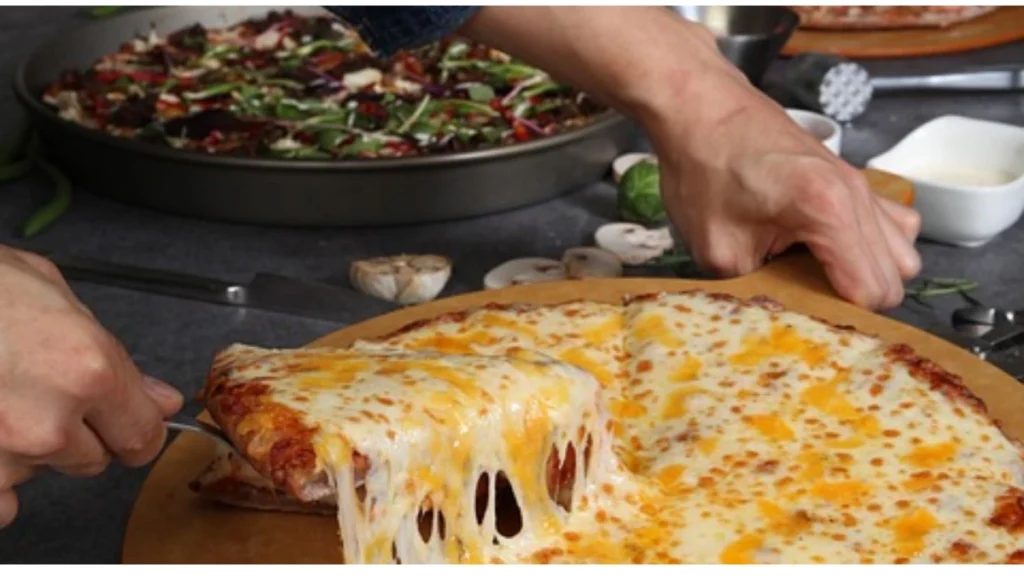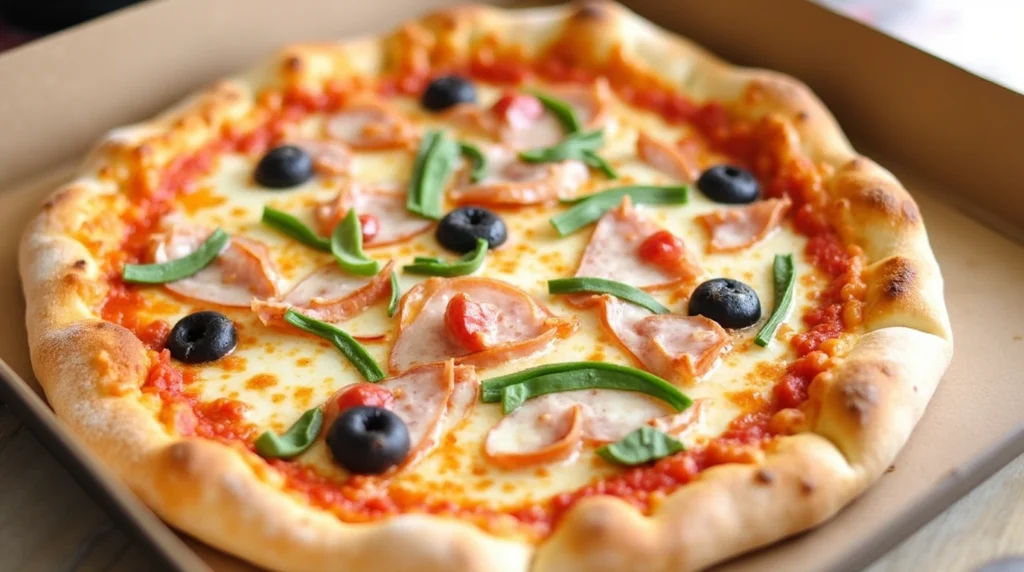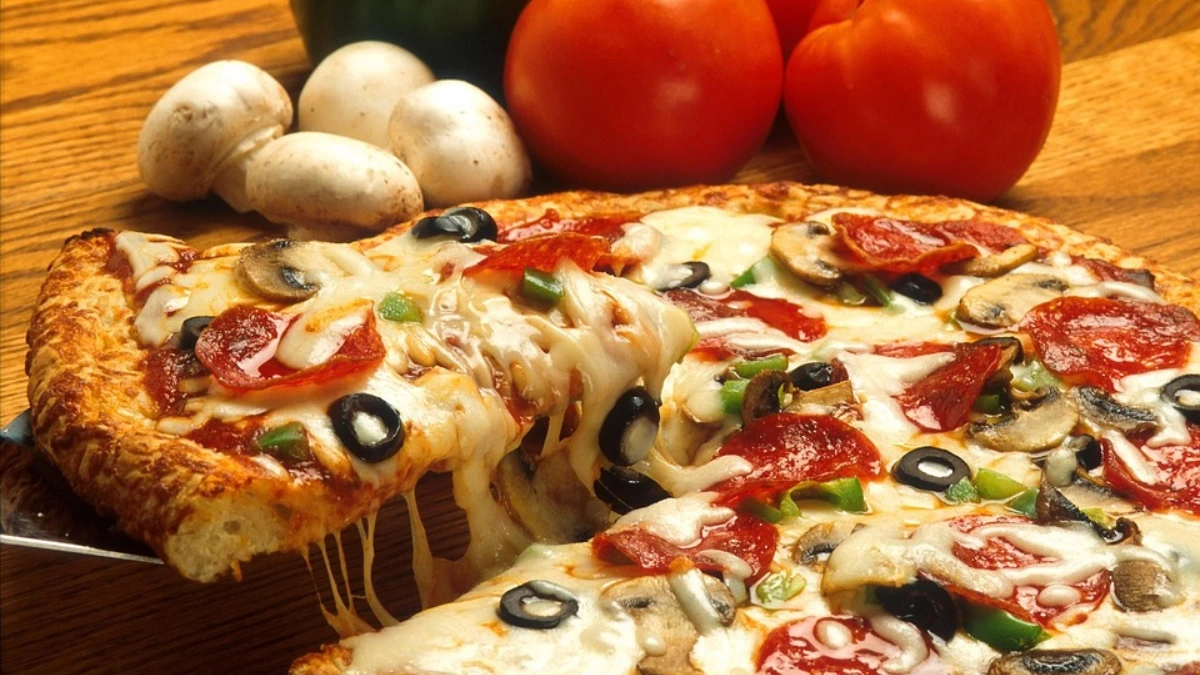Pizza Pie Recipe
Introduction: Why Pizza is the Perfect Dish for Beginners
Pizza has long been a favorite comfort food, and for good reason: it’s customizable, satisfying, and, most importantly, fun to make. Homemade pizza provides an unmatched sense of achievement, offering complete control over the flavors, toppings, and crust. For those new to cooking, it’s a surprisingly accessible dish to create. The process is forgiving and flexible, allowing beginners to experiment and learn without much risk. Whether you’re crafting a classic Margherita or testing out creative topping combinations, the path to a perfect pizza is simple, and the results are consistently rewarding.
Making pizza from scratch is easier than most people realize. With just a handful of ingredients, a little patience, and some basic techniques, anyone can bake a fresh, mouthwatering pie at home. The beauty of pizza-making lies in its adaptability; you can start with simple recipes and build up your skills, gradually mastering the art of pizza-making at your own pace.
Gathering Your Ingredients: What You Need to Get Started
To create a truly authentic pizza at home, you need to gather a few essential ingredients. Start with the basics: flour, yeast, salt, and water for the dough. These are the core elements that form the base of your pizza. Then, consider the toppings—fresh tomatoes for the sauce, quality mozzarella cheese, and a selection of vegetables or meats depending on your preference. The freshness of your ingredients will elevate the flavor of your pizza, so take care in choosing high-quality items.
For tools, a pizza stone or baking sheet is key, but you can also bake your pizza directly on the oven rack for a crispy crust. If you have a pizza peel, it can make the transition from countertop to oven much smoother. Additionally, a rolling pin or your hands will help shape the dough, while a sharp pizza cutter will make slicing a breeze.
Understanding Pizza Dough: The Foundation of Every Great Pizza
Pizza dough serves as the backbone of any great pizza. The best pizza crust has a golden-brown exterior with a light, chewy interior. The key to this is the dough’s hydration level, which influences its texture and elasticity. When you get the dough right, the other elements, from the sauce to the toppings, will shine.
The science behind dough is primarily about the yeast. Yeast ferments the sugars in the flour, releasing carbon dioxide and causing the dough to rise. This gives the crust its airy, soft texture. Knowing how to handle yeast—ensuring it’s active and properly incorporated—is crucial to getting a dough that rises beautifully.
Making the Pizza Dough from Scratch: Step-by-Step
The first step in making pizza dough is preparing your workspace. Clear a flat surface, and gather all of your ingredients. Clean hands and utensils will prevent contamination and ensure the best results.
Begin by mixing your flour, salt, and yeast together in a bowl. Add warm water, making sure it’s not too hot (about 110°F is ideal) to avoid killing the yeast. Stir the ingredients together until the dough begins to form. Once you’ve created a rough mixture, transfer it to your countertop.
Kneading the dough requires patience. Push the dough with the heel of your hands, fold it over, and repeat. This motion helps develop gluten, which will give the dough its elasticity. Knead for about 8 to 10 minutes until the dough is smooth and slightly tacky but not sticky.
Once the dough is ready, let it rest and rise. Place it in a lightly oiled bowl and cover it with a clean cloth. Let it rise in a warm spot for 1 to 2 hours, or until it has doubled in size. You can test the dough’s readiness by gently pressing it with your finger—if the indentation stays, it’s ready.
Shaping Your Pizza Dough: How to Get the Perfect Crust
Shaping pizza dough can seem intimidating at first, but with a little practice, you’ll soon master it. While you can use a rolling pin to flatten the dough, stretching it by hand is the traditional method and helps maintain its airy texture. Start by gently pressing the dough into a flat disk, then pick it up and gently stretch the edges, rotating it as you go. This will help form a uniform base.
Avoid the temptation to rush the process. If the dough resists stretching, let it rest for a few minutes to relax the gluten. Once you’ve shaped the dough, transfer it to your baking surface, making sure the edges are slightly thicker to form a crust.
Prepping the Pizza Sauce: Simple and Delicious Options
A great pizza sauce doesn’t need to be complex. For a traditional pizza, a simple marinara sauce will suffice. To make this, blend canned tomatoes, garlic, olive oil, salt, and pepper. If desired, add a pinch of sugar to balance the acidity. Heat it gently on the stove to meld the flavors, and it’s ready to go.
For a different twist, try a white sauce made from olive oil, garlic, and cream for a rich, velvety base. Or, experiment with a pesto sauce for a vibrant, herby alternative. The key to a perfect sauce is balance—make sure it enhances, rather than overpowers, the other components.
Cheese Choices: The Key to a Delicious Pizza

Cheese plays a pivotal role in any pizza. Fresh mozzarella is the most popular option due to its smooth, creamy texture and excellent melting properties. However, other cheeses, like provolone, cheddar, or fontina, can add depth and variety to your pizza.
For optimal melt and texture, use a combination of cheeses. The mozzarella provides that classic stretchiness, while other cheeses contribute additional flavor. Remember, though, that a little goes a long way—too much cheese can overwhelm the other ingredients and make your pizza soggy.
Assembling Your Pizza: A Layer-by-Layer Breakdown
When assembling your pizza, start by spreading a thin layer of sauce over the dough. Avoid going overboard—too much sauce can make the pizza soggy. Next, sprinkle a generous amount of cheese, ensuring it covers the sauce evenly.
Then, add your toppings. Whether you prefer vegetables, meats, or a combination of both, be mindful of their moisture content. Toppings like mushrooms or fresh tomatoes release water as they cook, so it’s important not to overload your pizza with wet ingredients.
Baking the Pizza: Tips for Perfecting Your Crust and Toppings
Preheating the oven is one of the most crucial steps in baking pizza. The oven should be as hot as possible—around 475°F to 500°F is ideal. A preheated oven helps achieve a crispy crust without overcooking the toppings.
For a perfectly crisp pizza, bake it on a pizza stone, which mimics the effect of a brick oven by distributing heat evenly. If you don’t have a stone, a baking sheet or even directly on the oven rack will work. Bake the pizza for 10 to 15 minutes, checking frequently until the crust is golden and the cheese has melted.
How to Achieve the Perfect Golden Brown Crust
The color and texture of your crust are indicators of a well-baked pizza. Look for a rich, golden-brown color with slight charring on the edges. The crust should have a slight crunch, yet still be soft inside, with a chewy bite.
The secret to this perfect crust is a combination of baking time and temperature. Baking at a high temperature allows the dough to cook quickly, locking in moisture and creating a crisp exterior without over-drying the interior.
Using Alternative Baking Methods: If You Don’t Have a Pizza Stone
If you don’t have a pizza stone, don’t worry—you can still achieve a great pizza with alternative methods. A baking sheet is an accessible option and can yield a satisfying result. If you want to mimic the crispiness of a stone, preheat the sheet in the oven before placing your pizza on it.
Alternatively, a cast iron skillet can give your pizza a crisp, caramelized crust, particularly on the bottom. Preheat the skillet, then add your pizza and cook it on the stovetop for a few minutes before finishing it in the oven.
The Art of Pizza Presentation: How to Cut and Serve Your Pie
After baking, allow the pizza to cool for a few minutes before cutting. This helps set the toppings and prevents the cheese from sliding off. A sharp pizza cutter or a large chef’s knife works best for clean, even slices.
For presentation, consider adding a sprinkle of fresh herbs, a drizzle of olive oil, or a pinch of chili flakes for added flavor. Serve the pizza on a large platter, and pair it with a refreshing salad or a glass of red wine to elevate the experience.
Troubleshooting Common Pizza Making Problems
Despite your best efforts, there may be a few hiccups along the way. If your dough didn’t rise, it could be due to inactive yeast or too cold a resting environment. For soggy pizza, ensure your oven is hot enough and that you haven’t overloaded it with toppings. A burnt crust can result from too high an oven temperature, while an undercooked center may indicate the pizza hasn’t been in long enough.
How to Customize Your Pizza for Every Taste
One of the great joys of pizza-making is its versatility. For vegetarians, create a flavorful base with mushrooms, peppers, onions, and fresh basil. For meat lovers, try a blend of sausage, pepperoni, and bacon for a hearty, savory combination. Gluten-free and dairy-free options are also easily accommodated with specialty crusts and plant-based cheeses, making pizza an inclusive dish for all dietary needs.
Pizza Baking Tips for Beginners: Common Mistakes to Avoid
Beginner pizza makers often face a few common pitfalls: over-stretching the dough, using excessive amounts of sauce or cheese, and forgetting to preheat the oven. These mistakes can lead to uneven cooking or a soggy crust. Another crucial tip is checking your pizza halfway through the baking process—this gives you a chance to adjust if things aren’t going according to plan.
Making Pizza for Special Occasions: Tips and Tricks
Pizza is perfect for any occasion. For a family pizza night, make personal-sized pizzas to allow everyone to customize their toppings. For parties, consider serving a variety of pizzas to suit different tastes, or set up a pizza bar with all the toppings, letting guests create their own pies. Personalizing pizzas for children or picky eaters is also simple—let them add their favorite toppings to their own pizza.
Storing Leftover Pizza: How to Keep Your Pizza Fresh
Leftover pizza is a treat if stored properly. Let the pizza cool to room temperature, then wrap it tightly in plastic wrap or foil. To reheat, place the pizza in a preheated oven at 375°F for about 5 to 10 minutes, ensuring it stays crisp.
For a creative leftover pizza meal, transform your cold pizza into a breakfast dish by topping it with a fried egg or turning it into a savory sandwich.

FAQS
What makes a pizza pie?
A “pizza pie” refers to a pizza, especially when it’s made in a round shape and has a crust resembling a pie. The term “pie” originated in America, particularly with the tomato pie, which typically has a thick, focaccia-like crust and is topped with tomato sauce and a few seasonings. The round shape and the way the pizza is served (like a pie) contributed to the use of the term “pie.” Over time, it became a familiar way for many Americans to refer to pizza, blending Italian traditions with American vernacular.
How to build a pizza pie?
To build a pizza pie, follow these steps:
Start by sprinkling mozzarella and Parmesan cheese evenly on the bottom of your pie crust.
Next, add your sausage mixture (or preferred toppings) and spread it out evenly over the cheese.
Spread pizza sauce on top of the sausage mixture, ensuring the filling is fully covered.
Finally, sprinkle Italian seasoning and extra grated cheese on top, if desired.
Bake until the crust is golden and the cheese is bubbling for a delicious, homemade pizza pie!
How to cook my pie pizza?
To cook your pizza pie, follow these steps:
Do not preheat the oven—start with a cold oven.
Remove the pizza from all packaging.
Place the pizza on a metal sheet pan or pizza stone in the middle rack of your oven.
Turn your oven on to 400°F.
Bake the pizza for 35-45 minutes, or until the crust is golden and the cheese is bubbly
What is a garbage pizza pie?
A garbage pizza pie is a fun, hearty pizza loaded with a variety of toppings. Typically, it includes ingredients like pepperoni, sausage, mushrooms, peppers, onions, and sometimes anchovies for added flavor. The term “garbage” refers to the fact that you can pile on whatever toppings you like, creating a flavorful and satisfying mix. It’s a great choice for those who enjoy a bit of everything on their pizza!
Conclusion: Enjoying the Fruits of Your Labor
Once you’ve enjoyed the fruits of your labor, take a moment to savor the accomplishment. Homemade pizza is a skill that pays off not only in taste but also in confidence. As you continue to experiment, you’ll refine your techniques and develop a pizza-making repertoire that impresses family and friends. Mastering the art of pizza from scratch is a rewarding journey that can be enjoyed for years to come.


1 thought on “A Step-by-Step Pizza Pie Recipe for Beginners”